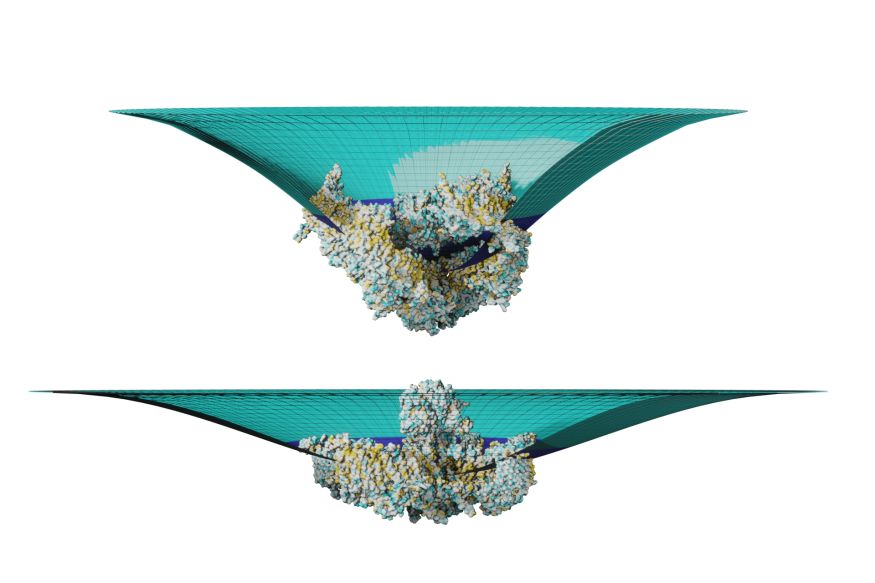The human body’s sense of touch is so important that it can be found throughout the body, not just the skin.
Two small touch sensors, Piezo1 and Piezo2, signal the lightest pressures and can be found monitoring the circulatory system, telling the body where its limbs are in space and even sounding the alarm about blood pressure. bladder. But a new study from Duke University shows that Piezo1 works differently than everyone thought.
“Because of the mechanism we found, we can basically say that this signal coming from Piezo is also picked up by other proteins, and therefore this really expands the way mechanical forces are transduced,” said Jörg Grandl, a professor associate professor of neurobiology at Duke. . “There are other signals that a cell can work with and understand and interpret further. So it opens up a new dimension of signaling.”
The discovery of the existence and ubiquity of Piezo1 and other touch sensors was part of the 2021 Nobel Prize in Physiology or Medicine and has become a hot research topic. Scientists around the world are pursuing a deeper understanding of these essential parts of physiology in hopes of being able to develop new therapies for pain and itching sensations and a variety of other problems.
Piezo1 resides in a depression on the cell surface that becomes shallower in response to light pressure. This movement in turn opens a channel in the protein to admit charged calcium ions into the cell — electrical current that is — which signals the cell how hard it is being touched.
However, Grandl and postdoctoral researcher Amanda Lewis say in a new paper that appeared online July 22 in the journal Neuron, that’s not all: Piezo1 can signal its neighboring proteins even when no electrical current is flowing through the channel. It changes shape enough to signal another touch sensor, a potassium channel called TREK1, if they’re sitting next to each other on the cell membrane.
“Over the last 14 years since the discovery of Piezo, almost anywhere in the body that some kind of mechanical sensation is happening, people have been looking to see what the protein is,” Lewis said. “And the answer is almost always that it’s Piezo.”
To see if the signaling was only occurring from a change in the shape of Piezo, Lewis and graduate student Marie Cronin created mutated versions of Piezo1 that were less flexible. They tried this with Piezos from fruit flies and mice. By applying gentle pressure with a micromanipulator, they measured responses in sensors down to 50 to 100 nanometers, the size of some proteins.
After seeing this, they turned their attention to where Piezo1 and TREK1 are located on the cell membrane and found that they occur closer together than would be possible by chance. Importantly, they do not connect to each other to share signals, but stay close.
“This is called ‘conformational signaling,'” Grandl said. It’s a change in shape, not a flow of ions that sends the signal. “It’s not completely unheard of, there are two other ion channels that have been previously described to do this. We believe this is the third one, but it’s different.” The other two conformational signals came from proteins that bind directly to the sensor.
The researchers’ next step is to understand how that conformational signal is sent from Piezo1 to TREK1. It likely involves a change in the cell membrane, but has not yet been measured.
“I think this expands the way we think about how piezos are playing all these different roles in the body,” Grandl said. “The assumption has always been that the way Piezos regulate blood pressure, light touch and bladder sensation is through their ion channel.”
“Every new biological mechanism you discover opens up new avenues for possibly using them as treatments against many diseases related to mechanosensation,” Grandl said. “The most prominent for sensitivity are mechanical pain and chronic pruritus, which is a major clinical problem.”
CITATION: “Piezo1 ion channels are capable of conformational signaling,” Amanda Lewis, Marie Cronin, Jörg Grandl. Neuron, 22 July 2024. DOI: 10.1016/j.neuron.2024.06.024 Online: https://www.sciencedirect.com/science/article/pii/S0896627324004598?via%3Dihub
/Public Notice. This material from the original organization/author(s) may be current in nature and edited for clarity, style and length. Mirage.News does not take institutional positions or sides and all views, opinions and conclusions expressed herein are solely those of the author(s). Watch it in full here.
